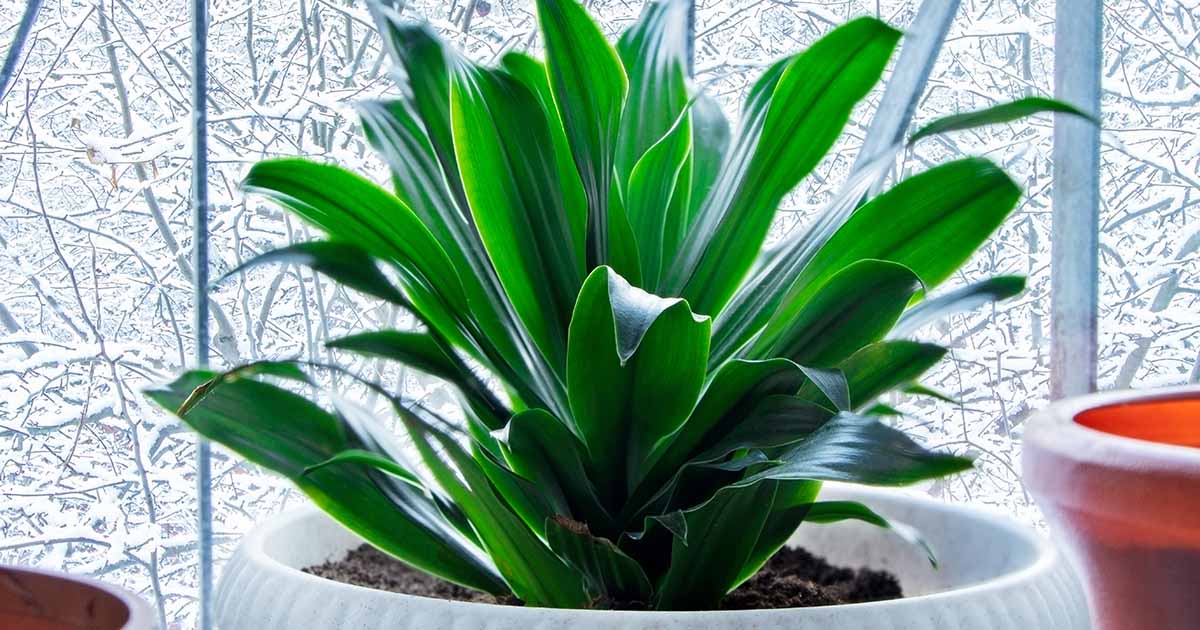
When it comes to the world of plants, there are countless fascinating species that capture our attention with their unique characteristics and beauty. One such plant that often goes unnoticed is the aspidistra. While it may not be as well-known as roses or sunflowers, the aspidistra boasts its own set of surprising facts that are sure to pique your interest. From its resilience and ability to thrive in low-light conditions to its impressive longevity and symbolism in literature and art, there’s much more to the aspidistra than meets the eye. In this article, we’ll delve into 17 surprising facts about aspidistra, shedding light on this remarkable plant that deserves a closer look. So, let’s dive in and uncover the hidden wonders of the aspidistra!
Key Takeaways:
- Aspidistras, also known as Cast Iron Plants, are resilient, low-maintenance, and air-purifying. They symbolize endurance and are perfect for beginners and office spaces.
- With origins in East Asia, Aspidistras have a rich history, cultural significance, and can live for decades. They bring luck, add symbolism to art, and are deer-resistant.
The Aspidistra is native to the forests of East Asia.
These fascinating plants can be found in various countries across East Asia, including China, Japan, and Taiwan. They thrive in the shaded and moist environments of the forest floor.
Aspidistra is commonly known as the Cast Iron Plant.
This nickname is well-deserved as this hardy plant can withstand a wide range of conditions, including low light, fluctuating temperatures, and neglect. It’s a perfect choice for those who are looking for a low-maintenance indoor plant.
The Aspidistra was popularized during the Victorian era.
During the 19th century, these plants became a symbol of refinement and dignity in the Victorian language of flowers. They were often used as decorative plants in homes and gardens, adding a touch of elegance to any space.
Aspidistras have long, lance-shaped leaves.
The leaves of the Aspidistra plant are typically dark green and have a glossy sheen. They grow in an upright manner and can reach lengths of up to 2 feet. This unique foliage adds a striking visual appeal to the plant.
Aspidistras are known for their ability to purify the air.
These plants have been found to be effective in removing toxins such as formaldehyde and benzene from the air, making them excellent choices for indoor spaces, especially those with poor ventilation.
Aspidistra flowers are small and inconspicuous.
While the leaves of the Aspidistra are visually striking, the flowers are small and often go unnoticed. They are typically brown or maroon in color and grow close to the ground. The plant primarily relies on its foliage for visual appeal.
Aspidistra flowers can produce a light, sweet fragrance.
Though often overlooked, the flowers of the Aspidistra can emit a delicate scent when they bloom. The fragrance is subtle and pleasant, adding an extra dimension to the plant’s overall presence.
Aspidistra plants are highly adaptable.
These plants are known for their ability to adapt to various growing conditions, making them suitable for different environments. They can thrive in both indoor and outdoor settings, as long as they receive adequate water and shade.
Aspidistras are excellent houseplants for beginners.
Due to their resiliency and low-maintenance nature, Aspidistras are ideal plants for individuals who are new to gardening. They can tolerate neglect and do not require frequent watering or specialized care.
Aspidistras can live for several decades.
With the right care, these plants can have impressive longevity. They have been known to survive for up to 50 years, making them a great investment for those looking for a long-term plant companion.
Aspidistras are considered symbols of resilience and endurance.
Due to their ability to thrive in less than ideal conditions, these plants are often associated with resilience and tenacity. They serve as a reminder that beauty can flourish even in the harshest of environments.
The Aspidistra is a popular choice for office spaces.
Its ability to tolerate low-light conditions and adapt to different temperatures makes the Aspidistra a favored plant for adding a touch of greenery to workspaces. It brings a sense of tranquility and nature to the otherwise sterile office environment.
Aspidistras are believed to bring good luck and prosperity.
In some cultures, it is believed that having an Aspidistra plant indoors can attract positive energy and promote financial well-being. It is often gifted to individuals who are starting a new business or embarking on a new chapter in their lives.
The Aspidistra is featured in literature and art.
These plants have made appearances in various works of literature and art, often symbolizing different themes such as resilience, endurance, or the contrast between beauty and simplicity. They add a touch of symbolism and depth to creative expressions.
Aspidistras are deer-resistant plants.
Due to their tough and unappetizing leaves, Aspidistras are not attractive to deer and rabbits. This makes them an excellent choice for gardens in areas where these animals are known to cause damage to plants.
Aspidistras can be propagated through rhizome division.
If you want to propagate your Aspidistra plant, you can do so by dividing its rhizomes. This is a relatively simple process that involves separating the plant into smaller sections and replanting them in separate pots.
Aspidistras have cultural significance in Japan.
In Japan, the Aspidistra is known as “Tora no O,” which means “Tiger’s Tail.” It is also associated with the goddess of weaving, who was said to have used the plant’s leaves as weaving materials.
Conclusion
Aspidistra, also known as the cast iron plant, is a fascinating and resilient plant that has captured the attention of plant enthusiasts around the world. With its ability to thrive in low light conditions and withstand neglect, it has gained popularity as a houseplant. But there’s more to this plant than meets the eye. From its origins in Asia to its unique growth habits, here are 17 surprising facts about Aspidistra:
1. Aspidistra belongs to the lily family, making it a distant relative of popular flowers like tulips and lilies.
2. It is native to eastern and southeastern Asia, including countries like China, Japan, and Vietnam.
3. The name “Aspidistra” comes from the Greek words “aspidon” and “istron,” which mean “shield” and “edible rhizome” respectively.
4. Aspidistra plants have long, glossy, dark green leaves that can reach up to 2 feet in length. The leaves are known for their ability to purify the air by removing toxins.
5. It is a slow-growing plant, and it may take several years for it to reach its full height.
6. Aspidistra can tolerate a wide range of temperatures, from as low as 50°F (10°C) to as high as 85°F (29°C).
7. It is often called the “cast iron plant” due to its toughness and ability to survive in challenging conditions.
8. Aspidistra is not a fan of direct sunlight and prefers to be in a shady or low light environment.
9. The plant is known to be resistant to most pests and diseases, making it an easy plant for beginners to care for.
10. Aspidistra is an excellent choice for indoor spaces with poor ventilation and air circulation.
11. In some cultures, the Aspidistra plant is considered a symbol of luck and prosperity.
12. It is often used in floral arrangements and is a popular choice for weddings and special occasions.
13. Aspidistra plants have a unique way of reproducing. Instead of producing traditional flowers, they produce inconspicuous, small, purple-brown flowers that grow at the base of the plant.
14. Aspidistra plants are known for their longevity, with some specimens living for over 50 years.
15. The plant has a high drought tolerance and can survive long periods without water. However, it is best to water it regularly to maintain its health and appearance.
16. Aspidistra can be propagated through division. By separating the rhizomes and repotting them, you can create new plants.
17. In Japan, Aspidistra plants are often used as symbols of endurance and perseverance.
FAQs
Q: How often should I water my Aspidistra plant?
A: Aspidistra plants prefer slightly moist soil but can tolerate periods of drought. Water your plant when the top inch of soil feels dry, usually about once every 7-10 days.
Q: Can I keep my Aspidistra plant in direct sunlight?
A: No, Aspidistra plants prefer low light or shady conditions. Direct sunlight can scorch their leaves and cause damage.
Q: What is the best temperature range for Aspidistra plants?
A: Aspidistra plants tolerate a wide range of temperatures, but they prefer temperatures between 60°F (15°C) and 75°F (24°C). Avoid drastic temperature fluctuations.
Q: Does Aspidistra require any special care or maintenance?
A: Aspidistra plants are low-maintenance and require minimal care. Regular watering, occasional fertilization, and cleaning the leaves to remove dust are usually sufficient to keep them healthy.
Q: Can I grow Aspidistra outdoors?
A: Aspidistra is typically grown as a houseplant but can be grown outdoors in USDA hardiness zones 7-11. Ensure it is planted in a shaded location with well-draining soil.
Aspidistra's surprising facts make this resilient houseplant a fascinating subject. Its ability to thrive in low-light conditions and purify air has made it a popular choice for homes and offices alike. Beyond its practical benefits, Aspidistra boasts cultural significance and has been featured in literature and art. For those interested in learning more about this intriguing plant, exploring the mindblowing facts about Cast Iron Plant can provide even greater insight into its unique characteristics and history.
Was this page helpful?
Our commitment to delivering trustworthy and engaging content is at the heart of what we do. Each fact on our site is contributed by real users like you, bringing a wealth of diverse insights and information. To ensure the highest standards of accuracy and reliability, our dedicated editors meticulously review each submission. This process guarantees that the facts we share are not only fascinating but also credible. Trust in our commitment to quality and authenticity as you explore and learn with us.


